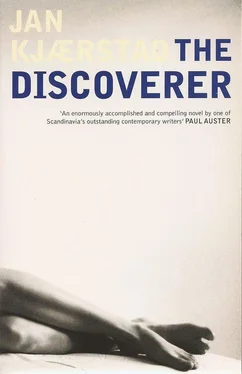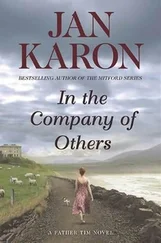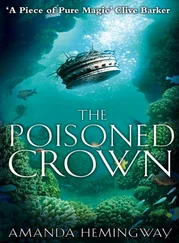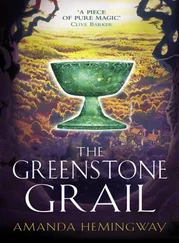Jan Kjaerstad - The Discoverer
Здесь есть возможность читать онлайн «Jan Kjaerstad - The Discoverer» весь текст электронной книги совершенно бесплатно (целиком полную версию без сокращений). В некоторых случаях можно слушать аудио, скачать через торрент в формате fb2 и присутствует краткое содержание. Год выпуска: 2009, Издательство: Arcadia Books, Жанр: Современная проза, на английском языке. Описание произведения, (предисловие) а так же отзывы посетителей доступны на портале библиотеки ЛибКат.
- Название:The Discoverer
- Автор:
- Издательство:Arcadia Books
- Жанр:
- Год:2009
- ISBN:нет данных
- Рейтинг книги:5 / 5. Голосов: 1
-
Избранное:Добавить в избранное
- Отзывы:
-
Ваша оценка:
- 100
- 1
- 2
- 3
- 4
- 5
The Discoverer: краткое содержание, описание и аннотация
Предлагаем к чтению аннотацию, описание, краткое содержание или предисловие (зависит от того, что написал сам автор книги «The Discoverer»). Если вы не нашли необходимую информацию о книге — напишите в комментариях, мы постараемся отыскать её.
The Discoverer — читать онлайн бесплатно полную книгу (весь текст) целиком
Ниже представлен текст книги, разбитый по страницам. Система сохранения места последней прочитанной страницы, позволяет с удобством читать онлайн бесплатно книгу «The Discoverer», без необходимости каждый раз заново искать на чём Вы остановились. Поставьте закладку, и сможете в любой момент перейти на страницу, на которой закончили чтение.
Интервал:
Закладка:
On this tour of the Town Hall, with two torchbeams criss-crossing in the air like huge, bright blades, he was also introduced to people. Some names, like Fridtjof Nansen and Bjørnstjerne Bjørnson, he already knew, others, such as Nordahl Rolfsen and Paal Berg, he had never heard of. Head warden Moe called them ‘Norwegian heroes’ and Jonas was given to understand that from time to time people came along who would be of crucial significance to the progress of their country. It was a lesson he would always remember, even — later — in a day and age when it became popular to maintain that individual people could no longer influence history. It struck Jonas, as he walked along between his grandmother and Mr Moe, that he might never do anything quite as wonderful as this again: to wander through darkened rooms in a vast building, sweeping a circle of light over evocative pictures on walls and ceiling — suddenly spotting an enchanted princess or jumping at the sight of a three-headed troll with a trio of snarling faces. Saturday night entertainment did not come any better than this; he caught himself missing the bar of milk chocolate he was usually allowed when watching Children’s Hour.
Best of all he remembered their visit to one of the rooms adjoining the council chamber. There, in the East Gallery, he found Per Krogh’s frescoes, one long painting covering three walls and the ceiling. It was like walking right into, becoming part of a picture. Jonas paused in front of a jumble of housing blocks on one wall; he shone the beam on one window after another so it almost looked as if he was lighting up the rooms behind them. In one, an old man was playing the flute. In another a bride was adjusting her finery. All at once he came upon himself. In a room in the Town Hall, in a room in a fresco, he discovered an exact replica of himself. Behind one of the windows he illuminated a small boy was doing his homework, a globe of the world at his elbow.
His grandmother registered his reaction and gave his hand an extra little squeeze. ‘I’m in one of these pictures too,’ she said, with a slight quiver in her voice. Little did Jonas know that this was absolutely true and that, due to a highly unconventional contribution to the war effort, Jørgine Wergeland genuinely had earned the right to be there.
Some years later, when Jonas gained admission to the Town Hall again, during opening hours this time, in broad daylight, and was able to take in the main hall at one glance, the initial impact almost blew him away. He stood in the middle of the marble floor, in the middle of that huge hall and stared round about him until his neck ached, marvelling at Henrik Sørensen’s bright-hued oil painting on the end wall and Alf Rolfsen’s vibrant patterns of light and shade on the side walls. After a while, however, he became conscious of a vague sense of disappointment. Nothing could compare with the experience of that spring night when he had gone round the Town Hall with his grandmother and Einar Moe, when he had brought the rooms, the pictures, to light a bit at a time; built them up into a whole by himself — images and associations which in many cases were possibly more fascinating than what he now beheld.
It says something about the strength of this memory that many years later, even beneath a parasol on a deserted beach in Montevideo, he could still call to mind some of those imaginative mosaics. After a long, dreamlike tour of his memory — it might have lasted hours, it might have lasted twenty seconds — it was as if, sitting in that deckchair with his eyes fixed on the waves, he suddenly woke up. He understood what it was, above all, that had been implanted in him that night: an appreciation of a project bordering on the impossible. Even as a boy, equipped only with a torch, he had grasped the magnificence of the concept, the power of the vision behind the decorations in Oslo Town Hall. Was there an idea for television here? To create just such circles of light? Present fragments of a greater whole? Pick out, shed light on, people in a crowd?
His thoughts went to his grandmother. He could have done with a dose of her rabble-rousing spirit as he lounged there in that deckchair on the silver sands, gazing out across the Rio de la Plata as if waiting for an idea to come drifting ashore, in the form of a message in a bottle, without him having to lift a finger. Once, his grandmother had looked deep into his eyes and said: ‘Jonas, there’s too much Hansen in you and not enough Wergeland. You’re going to have to find the rebel within you.’ She would have been appalled if she could have seen him now, lying flat out on a deserted beach in far-off Uruguay. Or maybe she would have understood: he lay there remembering Bo Wang Lee, he lay there looking for something to take with him. A key concept. Material which could be turned into television programmes. Television that was different. Not Hansen programmes, but Wergeland programmes. Dangerous programmes.
Jonas’s grandmother was certainly qualified to talk about rebellion; she had always been something of a disruptive element. When Jonas staged his protest in the Town Hall Square, dared to shake his fist at a superior opponent, he thought not only of those nocturnal childhood wanderings among edifying frescoes, but also, and to as great an extent, of his grandmother — and of another inspiring episode in which she played a leading role.
Thanks to Winston Churchill, Jørgine Wergeland had early on acquired a taste for all things British. She had, therefore, one favourite spot in Oslo, a place she would often take a walk around during the war, to bolster her spirits: the English Quarter on Drammensveien, overlooking Solli plass. This exceedingly tasteful residential area — a jewel in the city’s crown — consisted of one long, two-storey building with a three-storey corner building to either side of it. It derived its ‘English’ epithet from the internal layout of the buildings, mansion flats occupying several floors, and not from its outward appearance which, with its domes and pitched roofs, was more reminiscent of the French neo-Renaissance style. But as far as Jørgine Wergeland was concerned the place was as English as N0.10 Downing Street.
Then, in the early sixties, the most outrageous, not to say unbelievable thing happened. What the bombers did not succeed in doing during the war, Oslo District Council decided to do. They proposed to tear down the English Quarter. Now, although Jørgine Wergeland took a murderously dim view of property developers — for reasons which will later become clear — she was not opposed to every form of urban renewal. But this lovely group of buildings was not only laden with personal memories of wartime, it was in itself utterly unique, an architectural gem. The English Quarter was quite simply part of the capital’s memory. ‘This provincial little town will be left even more devoid of history and bereft of atmosphere if we don’t preserve the best from every age,’ Jørgine muttered under her breath.
It is astonishing to note, today, how few people protested and how little stir this barbaric and incredibly short-sighted decision caused. When the impercipient members of the city council swanned into the Town Hall in June 1961 they completely overlooked the elderly, cigar-smoking lady who had made her stand outside and who, besides being absolutely furious that such a decision should be taken in this of all buildings, was holding aloft a placard inscribed with an injunction which every schoolchild had been taught to heed: ‘Do not erase!’ But the city fathers flouted all the rules of good behaviour and passed the planning bill, thereby also passing sentence of death on the English Quarter.
Some people may, however, recall a photograph published in the one vigilant Oslo newspaper, a picture which they had to smile at over their morning coffee. It was a picture of an elderly lady facing up to a massive demolition crane with her handbag raised, as if she were being subjected to a brutal robbery in broad daylight. Which is not, in fact, too far from the truth. That fateful year — which would also see both the Cuban Missile Crisis and a mining explosion in Nye Ålesund on Svalbard which led, some months later, to the downfall of the Gerhardsen government — also got off to a bad start. On one of the very first afternoons in January a twenty-eight ton, motorised monster rumbled across the pavements on Drammensveien, heading straight for the English Quarter’s gracious, but oh, so impermanent façades, and the aforementioned photograph was taken during the half hour when Jørgine Wergeland and her raised handbag managed to prevent the one-ton, cast-iron ball on that mobile crane from smashing into something that was as dear and precious to her as a loved one’s face. To her this was a living building, a personal reminder of Winston Churchill, but it did no good. Nor did her words: ‘Shoo!’ she cried — as if she were addressing some mangy old mutt. ‘Shoo! Away with you!’ In the course of that afternoon and evening, the greater part of the English Quarter’s irreplaceable façades overlooking Drammensveien were reduced to a heap of smoking rubble.
Читать дальшеИнтервал:
Закладка:
Похожие книги на «The Discoverer»
Представляем Вашему вниманию похожие книги на «The Discoverer» списком для выбора. Мы отобрали схожую по названию и смыслу литературу в надежде предоставить читателям больше вариантов отыскать новые, интересные, ещё непрочитанные произведения.
Обсуждение, отзывы о книге «The Discoverer» и просто собственные мнения читателей. Оставьте ваши комментарии, напишите, что Вы думаете о произведении, его смысле или главных героях. Укажите что конкретно понравилось, а что нет, и почему Вы так считаете.












